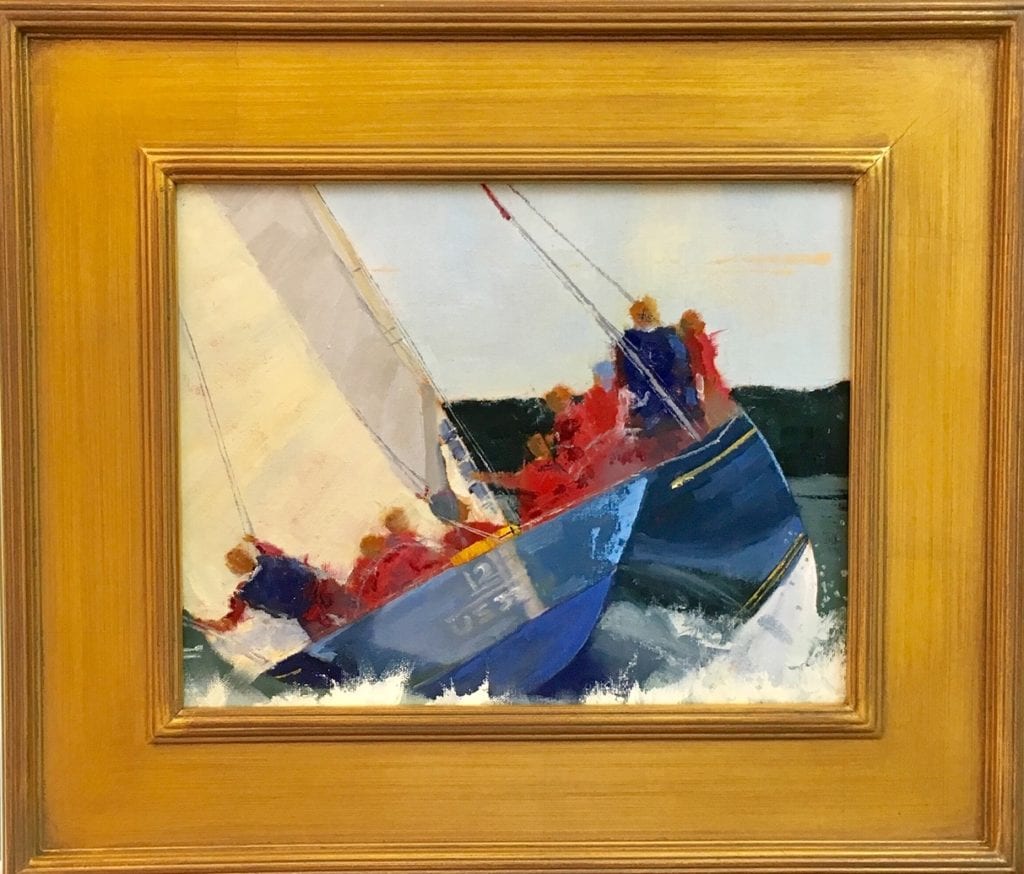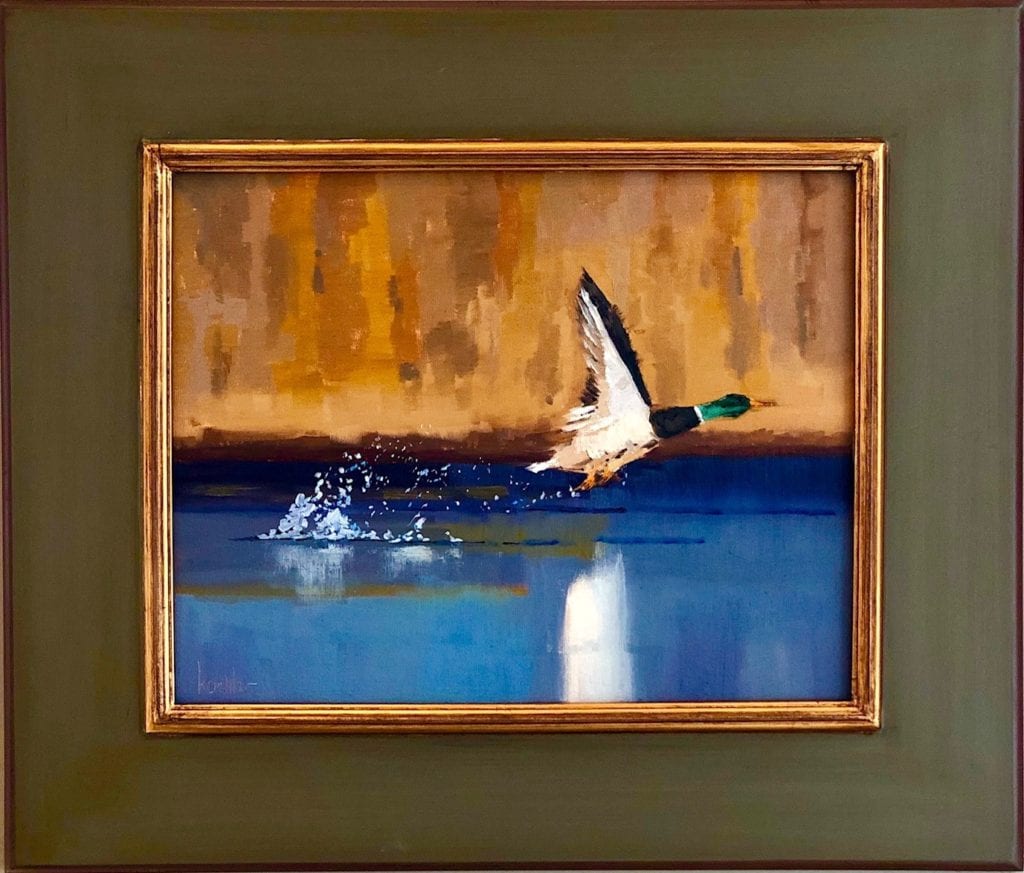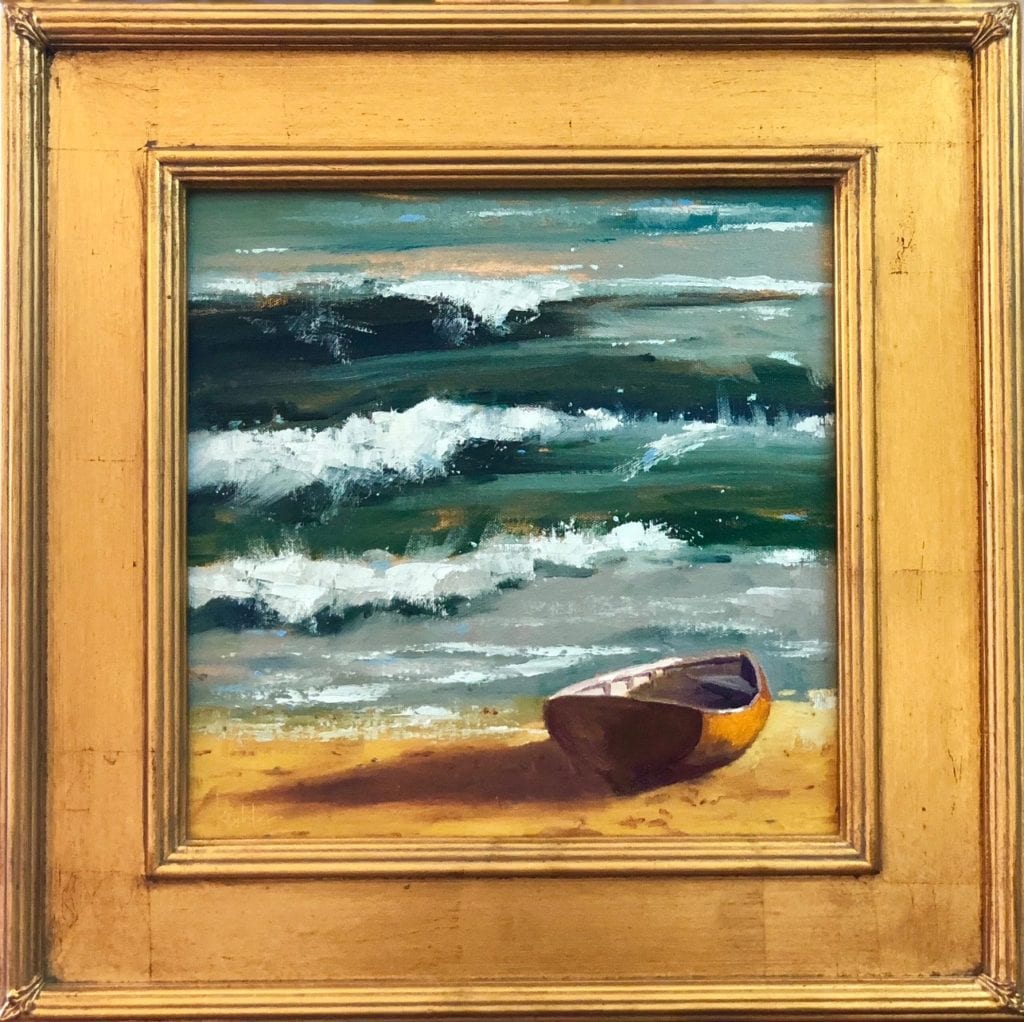I think that as artists, one of the primary goals of a successful painting, whether spoken or unspoken, is that we hope to evoke an emotional response from the viewers of our paintings. We want that untrained eye to approach one of our pieces, and smile. In fact, it is my hope that the buyers of my paintings will smile each and every time they look at their new piece of artwork. I actually say that in my ‘thank you’ notes to them.
We have all heard and perhaps even taught about the 5-7 key elements of a good painting: line, form, texture, value, pattern and color. But if you look up what makes up the key elements of design, you will find that one of them is Movement. I will suggest that when movement is one of the elements in your painting, it will evoke a greater emotional response from the viewer, than when that element is not present.
Most still life’s do not have movement as one of their elements. Perhaps Tibor Nagy would be the exception to that statement. Most portraits likewise do not possess movement in them. In fact, many landscapes, while successful in inviting the viewer in, do not possess movement.
I am not suggesting that all paintings need to have movement in them to be successful; I am simply saying that when the element of movement is present, the emotional response is greater. The viewer can smell the salty air, feel the wind or hear the waves crashing onto the shore.
In U.S.33 (also known as Defender) you can feel the power of the wind driving that beautiful sailboat forward.

In Taking Flight, you feel lucky to get that instantaneous snapshot of the duck lifting off the water’s surface

In Beached, you understand that the little rowboat was lucky to be pulled ashore before the wind kicked up and the waves grew too large to handle.

Roger Dale Brown OPAM taught me that “you don’t need to fill in every little detail, because the mind will fill in the blanks”. I totally subscribe to that line of thinking and further believe that the mind will do likewise when movement is present.
Happy painting!